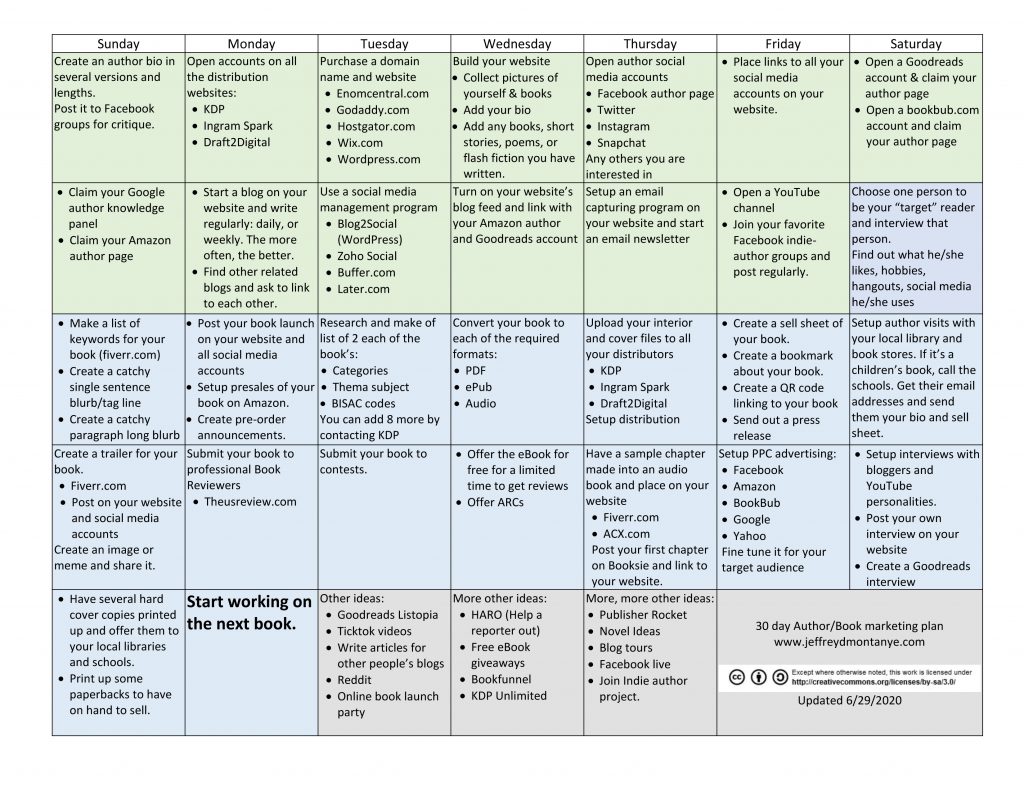No character, not story, right? But do you know your characters? And should you? Each character is consists of several parts, which, together, give the reader the idea of a real person. These include traits, nature, favorite and hated things, gestures, speech… When you give your character something specific in all these areas, they will look much more alive. If you really know your character, it will not be a problem for you to tell how they would behave even in an unrealistic situation, and you will avoid difficulties.
Continue reading “Who is Your Character?”Category: guest blog
Imagining Other Worlds
Have you ever wondered ‘what if’? What would my life look like today if I’d ___? What if I had been popular instead of an awkward nerd in High School? What if… is a question full of infinite possibilities. Writing allows us to explore this question and unpack how we are shaped by things that happen to and around us. With each exploration of causality an entirely new world is formed. Sometimes the smallest most seemingly insignificant choices are the ones that make the biggest difference in our lives. This is why I love dystopian stories.
Continue reading “Imagining Other Worlds”You Just Can’t Take Criticism
You may have heard that a time or two. And if you have, there’s more than a chance that the person saying it had a gleam of triumph in his or her eye. You asked them what they thought of your work—and oh, boy, did they tell you. Such a reader isn’t shy. Indeed, they have a talent for bringing you to tears of distress. They’re free with judgments like “ugh”, “cheesy” and “cringe”, but short on specifics.
Press such a reader for details of what they meant by “it just doesn’t work” and they’ll exclaim “Don’t ask me! You’re the writer!” Readers like this behave though they occupy some kind of moral high ground, regardless of their blunt rudeness. And up there, they clearly seem to believe, there’s no room for minced words, pulled punches,or…feelings. No, instead you must let them rain down upon you with a barrage of vague, yet devastating,truthbombs—because, they’ll point out—you asked for their opinion.
It’s hard to reply to this. Unless you caught this reader in the act of scoping your work without permission, you did ask for their opinion. So make any peep of argument, show any sign that their comments are hurtful, and you’ll find yourself in the rapidly growing shadow of the biggest bombshell of all: “You know what your problem is? You just can’t take criticism!” It’s a blockbuster. Since a professional is supposed to welcome honest opinions and have a hide as thick as armor,” can’t take criticism” seems unanswerable. Did your rude reader just destroy you?

No. Wait. I’d like you to consider the possibility that you absolutely can take criticism—but what you just experienced was no such thing. It was a volley of noise, not a legitimate critique. Critique—not mere disapproval, digs disguised as advice, shouts from a soapbox, or any of the thousand other varieties of noise—is the only kind of criticism you should be expected to “take”. Critiques are perhaps best known to art students. In their essential form, they consist of three-to six-hour sessions where students pin their latest assignments toa the wall and listen as their classmates describe what succeeds and fails in each piece, using agreed-upon terminology that their professor teaches them alongside their creative skillset. There is no place in a “crit” for jabs or snark; the students are there to defend their creative decisions, not their dignity. The fact that art students do not, as a rule, exit critiques in despair, vowing to hurl their materials into a ravine and never draw again, shows how effective it is to limit the discussion to that which can be expressed in targeted, technical vocabulary.
So back to your truth-bombing reader. If ever you find yourself under fire, don’t panic. Ask yourself: is this person, at a minimum, able to speak properly about writing? When a reader is capable of using dispassionate terminology to point out specific examples, it gives you confidence that their opinion has value—and that, in turn, makes it easier to believe they aren’t just out to annihilate you. A reader becomes far easier to listen to if, instead of pouting “this reminds me of that stupid book from high school!”, she has the ability to recast her comment as “I can’t tell whether I’m supposed to sympathize with this character or not… remember how upset I was when that happenedin[bookfrom high school]?”. A respectful, properly worded statement such as “[Trope] is overused… look at [examples]” is far less likely to frustrate you or hurt your feelings than unactionable snark like “OMG, so hokey”. And you may safely give yourself permission to ignore readers who blurt “Ugh. That’s like a bad sitcom “without being able to tell you what makes a sitcom bad, or why they made that comparison.
When you were writing, you had countless choices. Not every piece of research you uncovered made it into your final draft; you didn’t use every possible plot device; every potential combination of words could not possibly have been considered. In each and every case, your decision was guided by some analysis—conscious or not—of the value choice would bring to your work. Those choices extend to what “criticism” you take. Be choosy—not in the sense that you refuse to entertain any doubts about your work, but in that, you won’t waste energy reacting to comments that don’t meet your minimum requirement. You’re a pro, after all, with better things to do than be a target. Don’t engage with inferior forces. Just let their stinkbombs pass you by.

Just Starting with your Story?
The stories are as old as humanity itself. Since prehistoric times, people shared and recorded them on the walls of caves and their pottery. They were passed down orally from generation to generation, and storytellers were welcomed everywhere. Each one had their way of storytelling and favorite genres too.
Continue reading “Just Starting with your Story?”30-Day Book Marketing Plan

If you’re an independent (indie) author, like me, you’re either selling a lot of books right now or searching for ways to do so. Most of us are probably doing the latter. That was… is me. I have read every blog, watched every YouTube video, joined every author Facebook group, and purchased every book on the subject. OK, maybe not every one, but I can honestly say I’ve done a lot.
The problem with researching multiple sources is that you never get all the information in one nice little package. Every resource has a different viewpoint and approach. Today you might read a blog that says selling exclusively through KDP is key. Tomorrow a Facebook post might tell you the complete opposite. Who is right? Nobody is. They’re all wrong. But at the same time, they’re all correct.
Every book has its own story- not just the words written within but also how it became a success- or a failure. You can’t look at the success of one book and apply its marketing strategy to another. Like the story within, the author must write the book’s success story in its unique way. Some people say they owe their success to a well written Amazon ad. Others say it was attending conventions. Still others say a free giveaway put their sales through the roof. Every story is different.
Of all the variations of marketing, there is one technique that seems to be consistent throughout. Be persistent. Don’t give up.
To choose the right marketing path, you have to become familiar with all the possibilities or, at the very least, know they exist. Then you can select the one you feel fits your book the best. That is why I created the 30-Day Book Marketing Checklist. For just one low payment of- no, no, this is not an ad for a product I’m selling. It’s a free outline of all the ways I have found to market a book. When you have many sources of information, it becomes difficult to keep them all organized in your head. You begin to forget where you found those gold nuggets last week or last month. And the internet is packed full of gold nuggets, but it also has a lot of fools gold. You’re going to need a big shovel to get through it all. Which is the very thing my checklist is- a big shovel that helps you dig through the sludge.
Marketing is a chain reaction. It starts with you and gets handed off to others like dominoes falling in a line. First, you have to get out there and show your face. Become that familiar figure people know and trust. Then those people pass that trust to those who know and trust them. After a while, everybody else is doing a lot of your marketing work for you.
Marketing is multi-targeting. People need to hear about you multiple times in multiple ways. If someone hears a friend mention your book, then they see it on a Facebook ad, then see it in their email, and then they will want to buy it. Three time’s a charm.
Marketing is a continuous effort. You have to keep it going continuously. You can’t just put an ad out for a week and stop. People need to see it more than once.
Go through the plan. Do as much of it as you can as often as you can. Marketing works. Now go and sell your book(s).
And buy mine!
Article and graphic by Jeffrey David Montanye

Adult Wednesday Addams

Who wouldn’t know the Addams Family? The warm and loving American family where children play with a guillotine. We probably know them thanks to two films from the 1990s. And even though an animated version, where everyone is similar to their 1930s comic book, came to cinemas last year, there is something else worth talking about.
Continue reading “Adult Wednesday Addams”